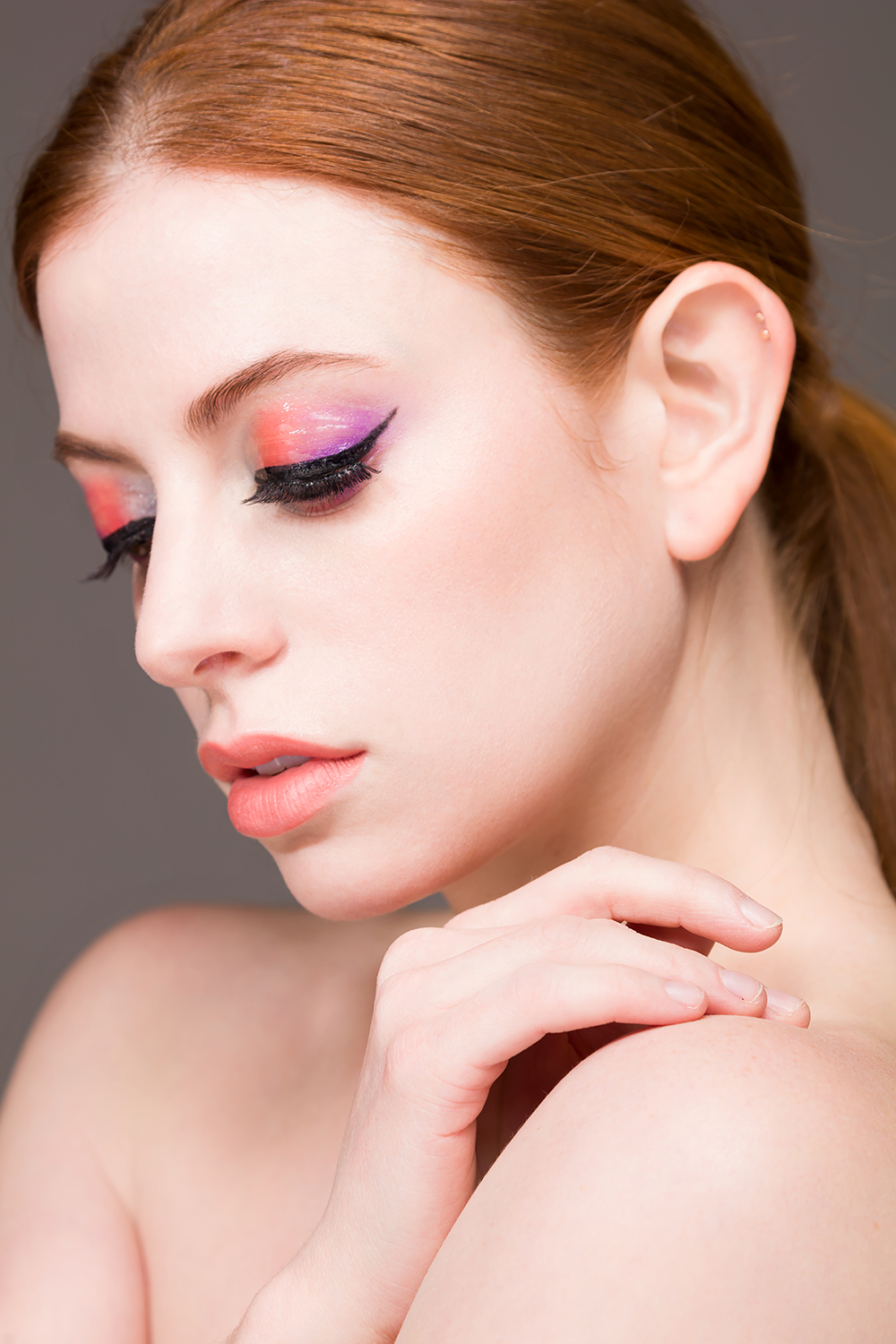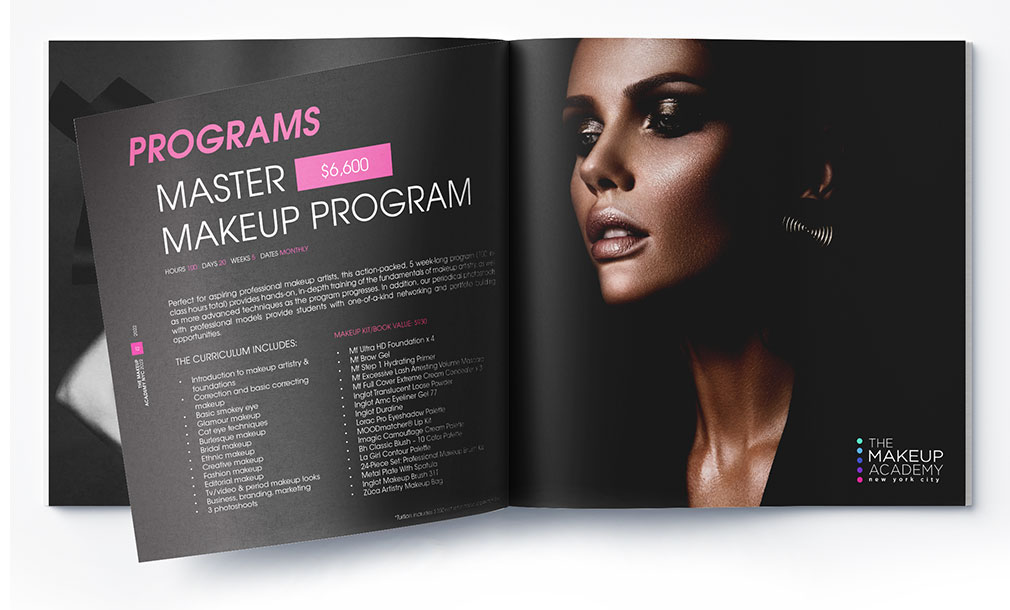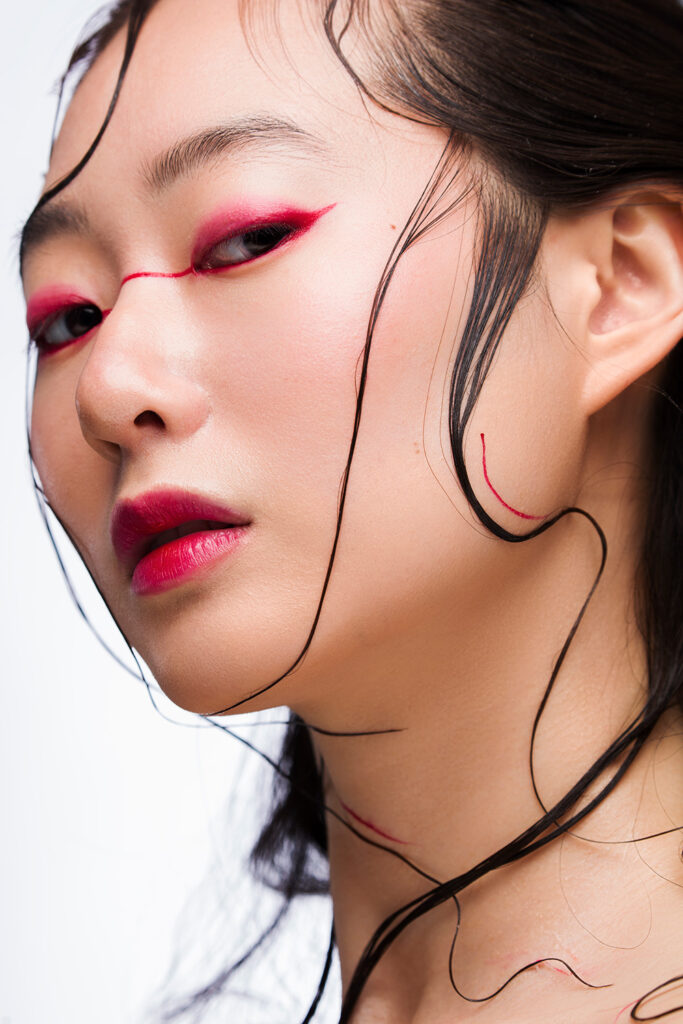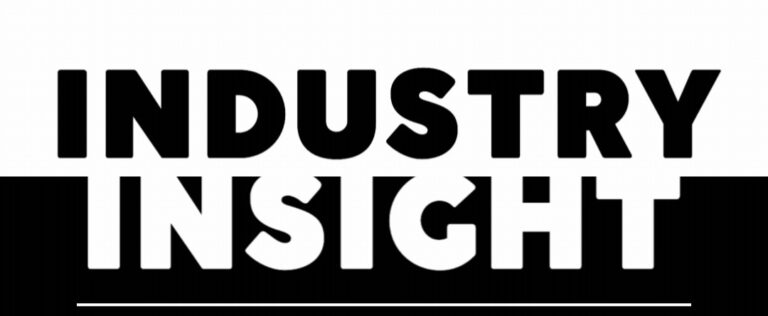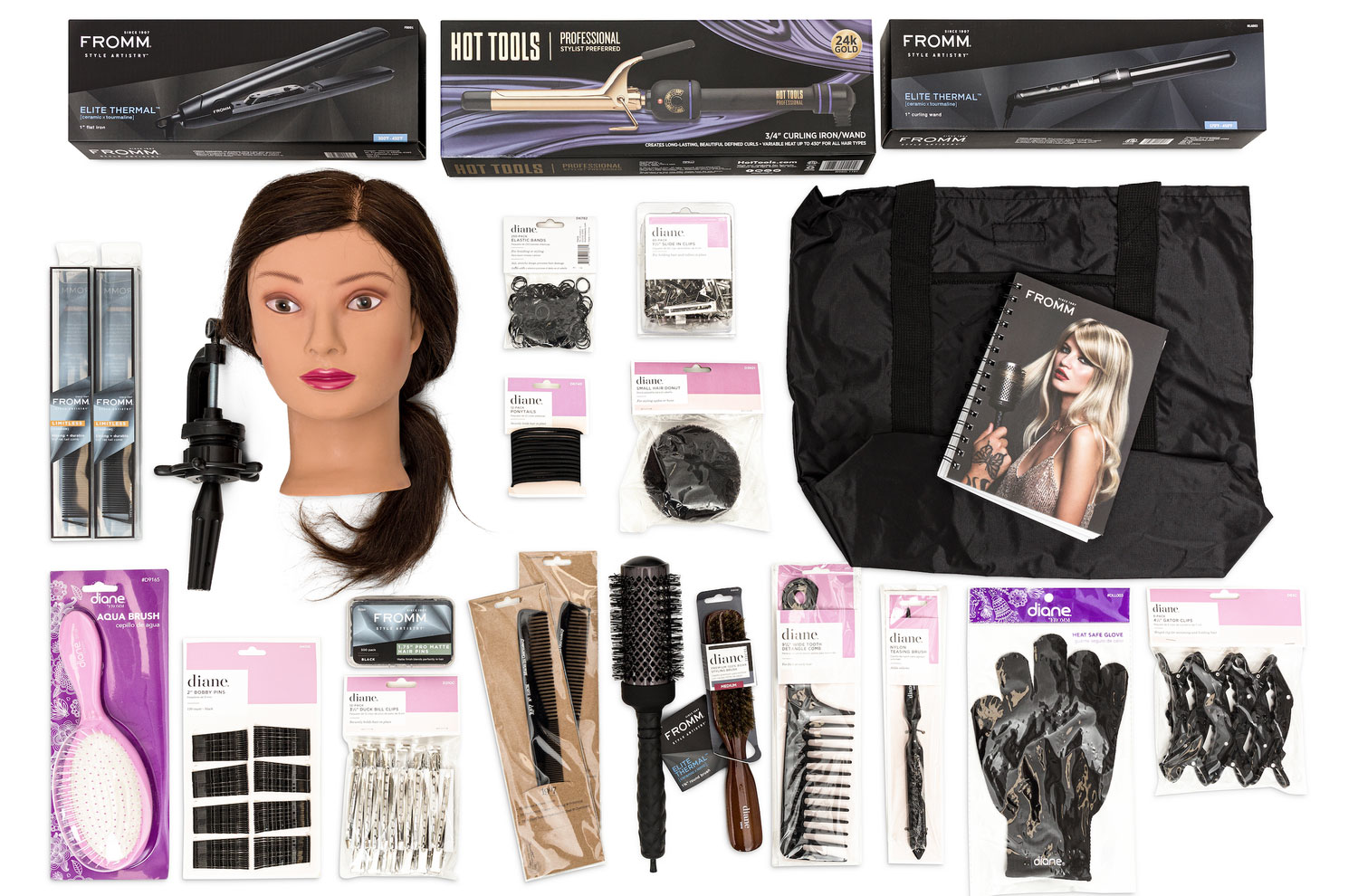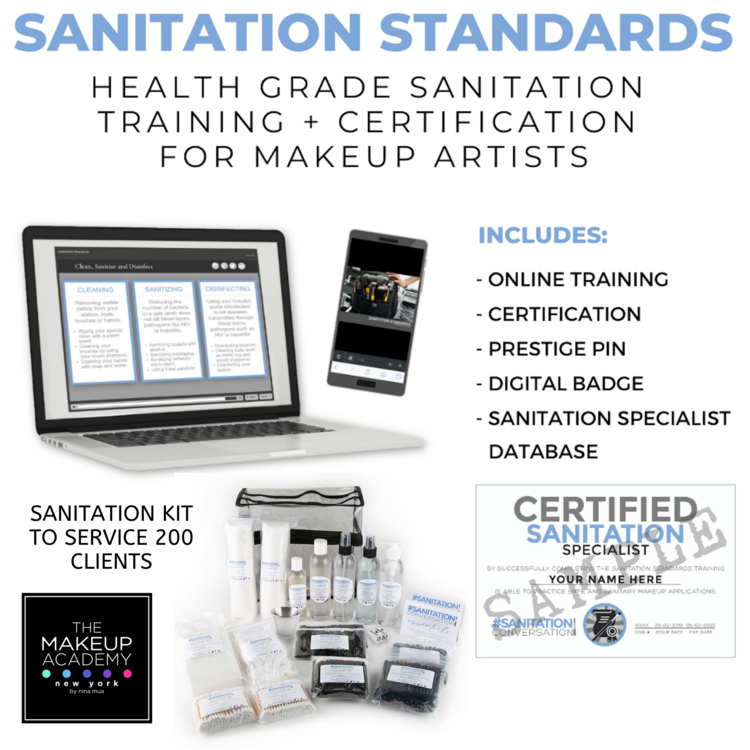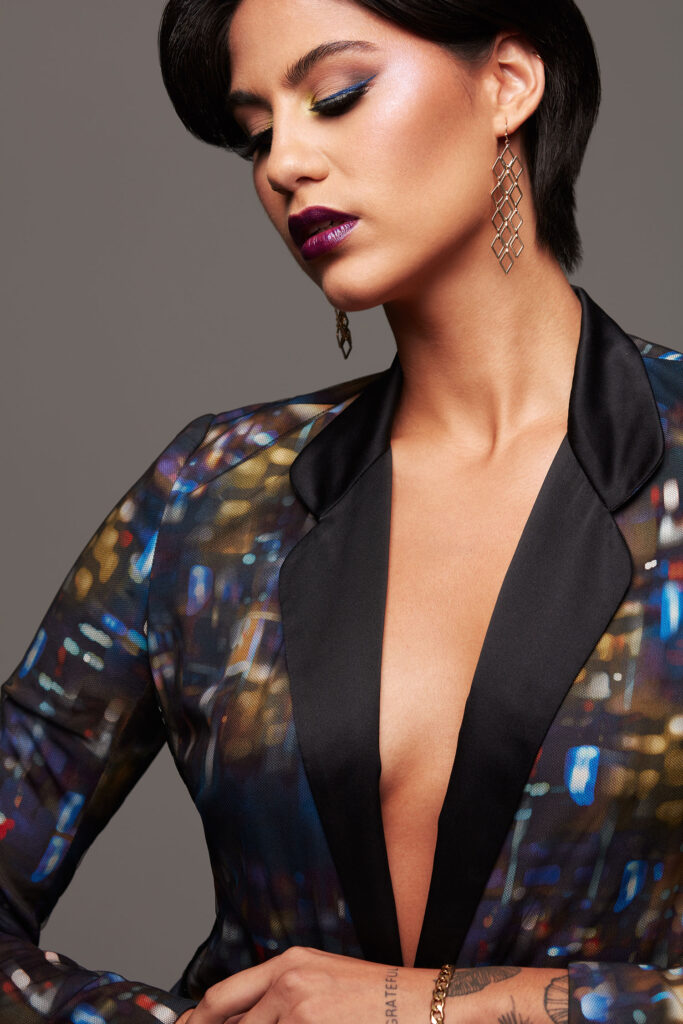1. Introduction – Why Body Paint is Having a Moment
Body paint has always had a place in creative performance, but post-pandemic, it’s exploded in relevance across fashion, music, theater, film, and even social media. From avant-garde runway looks to spine-chilling characters in blockbuster movies, mastering body paint techniques gives makeup artists a new creative language and opens career pathways that weren’t as accessible just a few years ago.
What makes body paint so powerful is its limitless range: it can be minimal, serving as a delicate accessory to editorial makeup, or transformative, creating a full-body illusion that tricks the eye. Brands, designers, and production houses are all turning to professional artists who can push beyond the face and work with the full human canvas.
- In editorial fashion: body paint is being used for statement campaigns, magazine covers, and music videos, often in collaboration with top photographers.
- In SFX and film: body paint helps create creatures, injuries, and otherworldly characters without relying solely on prosthetics.
- In live events and performance art, glowing UV paints, camouflage techniques, and bold abstract designs elevate stage visuals.
For makeup artists in NYC, this trend is particularly powerful. The demand for editorial makeup in NYC has surged, and those trained in body paint stand out in competitive casting calls. If you’re an MUA ready to expand your skills, learning structured techniques from professionals at The Makeup Academy NYC will give you both credibility and confidence to work across editorial and SFX projects.
2. Building the Right Foundation: Products and Tools
The success of any body paint look begins with the right kit. Your products and tools don’t just determine the outcome; they affect comfort, longevity, and how well your art photographs or films.
Essential Paint Types
- Water-based paints – Easy to apply and remove, great for editorial looks and short wear.
- Alcohol-based paints – Waterproof, long-lasting, often used in SFX or outdoor shoots.
- Cream-based formulas – Blendable and rich in pigment, excellent for character work and shading.
Core Tools in a Professional Makeup Kit
- Brushes – Fine detail brushes for lines, wide brushes for coverage.
- Sponges – For gradient blending and texture.
- Airbrush systems – Allow seamless application, especially for SFX body paint.
- Setting sprays and powders – Crucial for durability on set.
Skin Prep & Hygiene
Prepping the skin properly makes a world of difference. Clean, moisturized skin ensures paint lies smoothly. Barrier creams help protect the skin, especially for long applications. As every professional artist knows, hygiene is non-negotiable, especially when working in proximity to models for extended periods.
For MUAs training at The Makeup Academy NYC, building a professional makeup kit tailored to both editorial and SFX body paint is part of the workshop experience. You’ll learn not only which products to invest in, but how to use them effectively.
3. Editorial Body Paint: Turning Skin into High Fashion
Editorial makeup thrives on creativity, and body paint has become one of the most expressive tools for artists in the fashion and beauty industry.
Minimalist vs. Bold Fashion Looks
- Minimalist designs: clean lines, subtle accents, and body highlighting to complement clothing and accessories.
- Bold looks: graphic patterns, metallic finishes, and large-scale painted designs that create impact in photography.
Techniques for Editorial Success
- Use metallic pigments and reflective paints to catch the light.
- Experiment with abstract shapes and linework that translate well in editorial spreads.
- Pay attention to symmetry and proportion, especially when the body paint is designed to frame fashion.
Collaboration on Set
Editorial success often depends on teamwork. Makeup artists collaborate closely with stylists, photographers, and creative directors. When trained in editorial makeup in NYC, MUAs also learn how to anticipate lighting conditions so the body paint reads beautifully on camera.
At The Makeup Academy NYC, students learn how to execute editorial body paint looks in professional studio settings, ensuring their portfolio demonstrates both fashion sensibility and technical skill.
4. SFX Body Paint: Creating Illusions and Characters
When it comes to storytelling, body paint is a cornerstone of SFX makeup. It allows artists to transform performers into anything from skeletal warriors to alien beings, sometimes without a single prosthetic.
3D Illusions with Paint
- Muscular anatomy illusions that mimic exposed skin or superhero physiques.
- Trompe-l’œil effects like painted zippers, holes, or metallic implants.
- Fantasy creatures brought to life with exaggerated shadows and highlights.
Prosthetics + Paint Integration
While body paint is powerful on its own, the best SFX artists know how to blend it with prosthetics for realism. Adding veins, blood effects, or seamless color matching ensures characters look believable under stage lights or camera lenses.
Layering Techniques
Layering is key to creating depth. Artists start with a base tone, build shadows, then add highlights and textures. This is where mastering body paint techniques goes from surface-level painting to full transformation.
For MUAs who want to specialize, The Makeup Academy NYC offers a dedicated SFX Makeup Program and SFX Certificate where students train in character creation, illusion, and cinematic painting.
5. Blending Artistry with Technology
Modern body paint artistry doesn’t stop at brushes it integrates new tools and technologies that elevate the work.
- UV-Reactive and Glow Paints: Ideal for concerts, clubs, and theater productions, these paints create glowing illusions under blacklight.
- Airbrush Applications: Allow for gradient transitions, ultra-smooth coverage, and efficient large-scale painting.
- On-Camera Considerations: High-definition filming requires meticulous detailing. Artists must test how colors and textures appear under both natural and studio lighting.
Learning to blend artistry with technology is a critical part of body paint training at The Makeup Academy NYC, where MUAs work in professional studio environments. Students see firsthand how their paint translates on camera, an essential skill for both editorial and SFX careers.
6. Time Management and Workflow on Set
Body paint projects often take hours, if not entire days, to complete. Without a workflow plan, artists can fall behind schedule, which impacts the entire production.
Planning for Success
- Break down the look into stages: base coat, detail work, finishing touches.
- Estimate the time per section of the body to stay on track.
Working with Teams
On larger sets, MUAs rarely work alone. Assistants may handle the base application, while the lead artist focuses on detail and fine work. Good communication ensures consistency across the entire body paint design.
Endurance & Comfort
Both the model and the artist need stamina for long sessions. Professional MUAs learn positioning, breaks, and touch-up routines that keep everyone comfortable and productive.
At The Makeup Academy NYC, students practice full-scale projects that mimic real-world set environments, giving them the confidence to manage time effectively in high-pressure professional situations.
7. Professional Tips from Industry Pros
Industry veterans stress that technical skill is only part of the equation. Success in body paint comes down to professionalism and adaptability.
- Model Comfort: Always check in with the model, especially during extended paint sessions. Respecting boundaries is essential.
- Hygiene: Clean tools between applications. Use fresh sponges and avoid cross-contamination.
- Pricing Your Work: Editorial projects may pay differently from SFX film productions. Learning to price based on scope, materials, and time ensures your business is sustainable.
- Portfolio Building: Include a range of looks, editorial, fantasy, and horror to showcase your adaptability.
Students at The Makeup Academy NYC benefit from insider knowledge shared during workshops, including rate setting and portfolio strategy. It’s this professional insight that helps graduates transition quickly into the industry.
8. Training and Career Pathways in Body Paint
While talent can take you far, formal training gives you an edge in a competitive industry. Structured programs provide both the technical foundation and the professional credibility clients look for.
At The Makeup Academy NYC, MUAs can pursue:
- SFX Programs – Focused on special effects, prosthetics, and cinematic painting.
- Editorial & Fashion Workshops – Perfect for learning how to execute bold body paint looks for campaigns.
- Body Paint Certification – Adds credibility to your resume and proves mastery to clients and employers.
Many alumni have gone on to secure work in NYC editorial shoots, Broadway productions, and film projects, showcasing how the Academy bridges classroom learning with real-world application.
If you’re ready to elevate your career, explore the SFX Certificate Program or review the class schedule to plan your training. For more personalized guidance, reach out directly via the contact page.
9. Conclusion – Pushing Creativity Beyond the Face
Body paint is more than makeup; it’s performance art. It allows MUAs to bring visions to life, whether in high-fashion editorials or in cinematic special effects.
As you refine your artistry, remember: the skin is your canvas, but your vision is what transforms it into a masterpiece.
For artists ready to take the next step, The Makeup Academy NYC offers the training, certification, and real-world preparation needed to thrive. Whether your dream is fashion, film, or live performance, mastering body paint techniques will set you apart in one of the most exciting, dynamic corners of the makeup industry.



